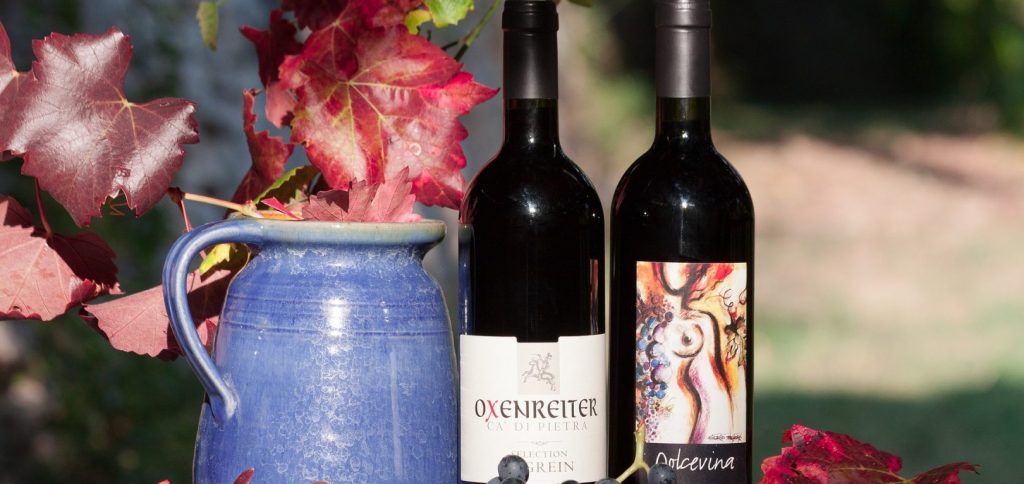Labels and the line between regulations and imagination: What it says is what’s inside, right?

An item’s dressing and packaging are essential for product marketing, and labeling plays a central role. It must meet many more requirements than it would appear at first sight.
For example, there are a number of legal requirements to be taken into account. In the case of wine, they are stipulated in a number of guidelines, regulations and laws of the European Union, the federal government and the states. In many cases, violating them is considered a criminal offence, and for good reason. The history of wine fraud and incorrect or misleading labeling is long. It has been accompanying wine for more than two thousand years.
Does a bottle of wine always contain what the label says?
Label manufacturer Gewa Etiketten GmbH is a supplier that specializes in wine labels and an exhibitor at SIMEI@drinktec. The company has been offering wine producers and wineries transparent and practical assistance for decades with its “Guide to German Wine Law.” Legal requirements for labeling wine, semi-sparkling wine and sparkling wine as well as other wine products are an important topic in it. For example, they include “mandatory information” such as naming the correct sales designation (for example “wine”, “sparkling wine” or “wine-based beverage”). But information about origin, contents and alcohol content as well as the batch number also belong on the label. A new guideline requiring that allergens be included on the label was introduced a few years ago. Besides this mandatory data, other information such as harvest year, grape variety and geographic origin may also be included on the label.
Despite clear guidelines, there are still plenty of fraudulent wines and misleading labels on wine and sparkling wine bottles in circulation around the world. When it comes to labeling, strange things can even be found at the largest wine exhibitions in the world—such as Vinexpo in Bordeaux: For example, a winegrowers cooperative from the French Mediterranean island of Corsica was well aware that the name “Prosecco” promotes sales. So they tried adding the words “Méthode Prosecco” to the label of a sparkling wine known as “100% Vermentino”. However, Prosecco may not be made from white Vermentino grapes, and due to their protected geographic origin on Corsica, sparkling wines known as Prosecco may not be produced there.
Labels make brands
Besides providing information, labels are part of a wine bottle’s optical design and give it added value. Labels are a wine producers’ advertising vehicle. The times in which producers relied on simple pre-printed labels are long gone. Occasionally, labels are veritable works of art. As such, they are designed by artists and appear in limited editions on the bottles of famous vineyards such as Chateau Mouton Rothschild and are often coveted collector’s items.
Labels differentiate the world of wine
Outstanding wine producers and their wines—such as Piedmont’s star winemaker Gaja—don’t need much more than a single name on the label. Its Barolos and Barbarescos are cult—and its label designs are just as iconic. The same thing applies to many traditional German vineyards. What wine lover isn’t familiar with the wonderful labels with Jugendstil and Wilhelminian designs of wine-growing estates such as Bassermann-Jordan in the Palatinate region or Robert Weil in Rheingau.
Of course, labels are not just collector’s items, they also perform an important orientation function: In 1923, the New York luxury hotel Waldorf Astoria acquired the 1921 Trockenbeerenauslese from the Maximin Grünhaus vineyard for the astounding price of 100,000 gold marks at an auction—an all-time record for the most expensive wine ever sold by auction. With prices like that, it is comes as no surprise that con men have always been tempted to counterfeit wines and labels. That still holds true today for a number of superior quality wines from Bordeaux, Burgundy and Tuscany. An Amarone della Valpolicella was copied with forged labels on a large scale in Canada just a few years ago.
Technology then and now
Labels were once one of a kind and, as the Greek name “lithography” indicates, were actually printed on stone slabs. Now state-of-the-art printing and labeling techniques are used to manufacture and process labels. The range of possibilities is large—from cold and hot gluing to self-adhesive labels. Despite efficient manufacturing and high-quality refinement with embossed printing or gold and silver lamination, modern technology makes it possible to come up with individual designs and allows the series manufacture of individual labels. It also makes it possible to individualize the design of the product.
Labeling and packaging at drinktec
Thanks to the World of Labels, drinktec has its own exhibition sector (Hall A2) specifically for labeling technology and labels. SIMEI@drinktec will also feature a number of companies such as the Italian label-machine manufacturer Cavagnino & Gatti S.P.A., whose customers include international winemakers and the company Valdo in Valdobbiadene. Other leading manufacturers in the label-machine sector that are exhibiting at the fair include companies such as Krones AG and KHS GmbH. SIMEI@drinktec will also feature a number of other exhibitors with state-of-the-art technology, solutions for digital networking and everything related to labeling glass and PET bottles. Visitors can gather additional information on the topic of wine in a series of workshops and lectures in the SIMEI Knowledge & Innovation Area.
